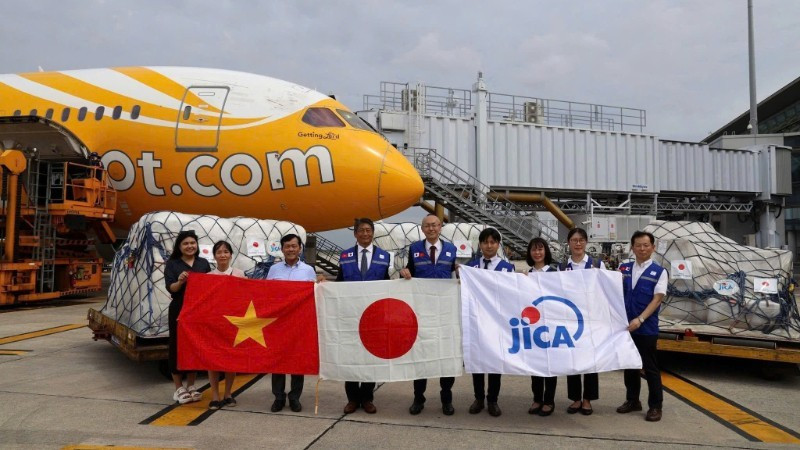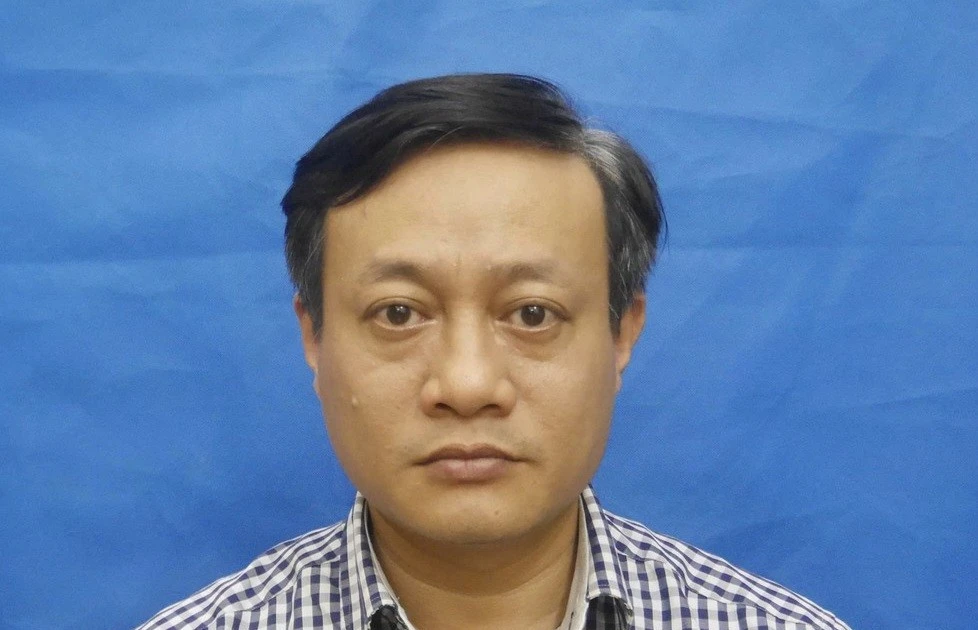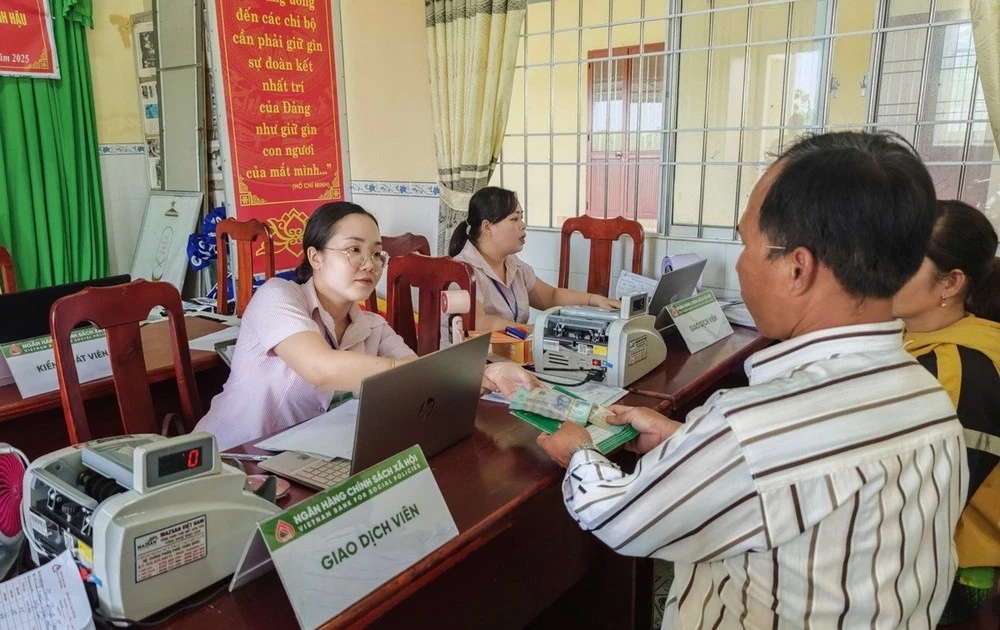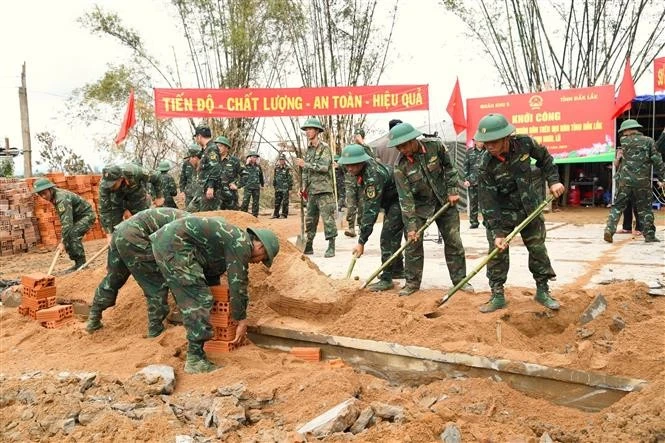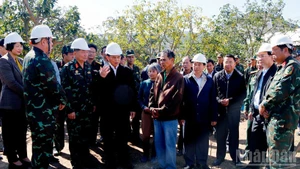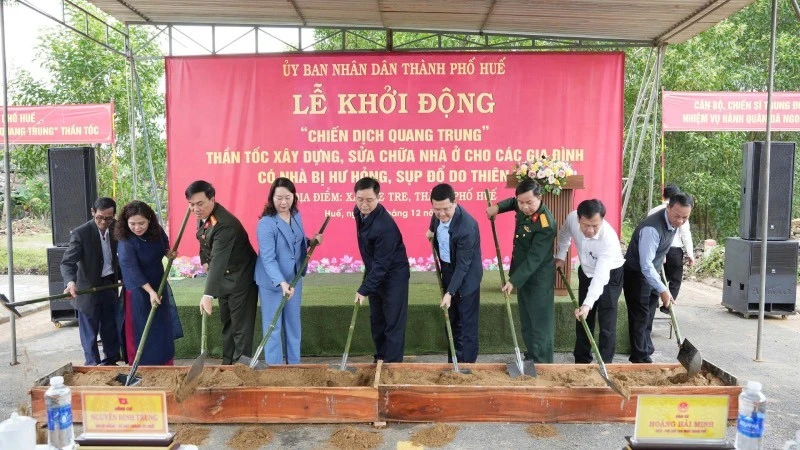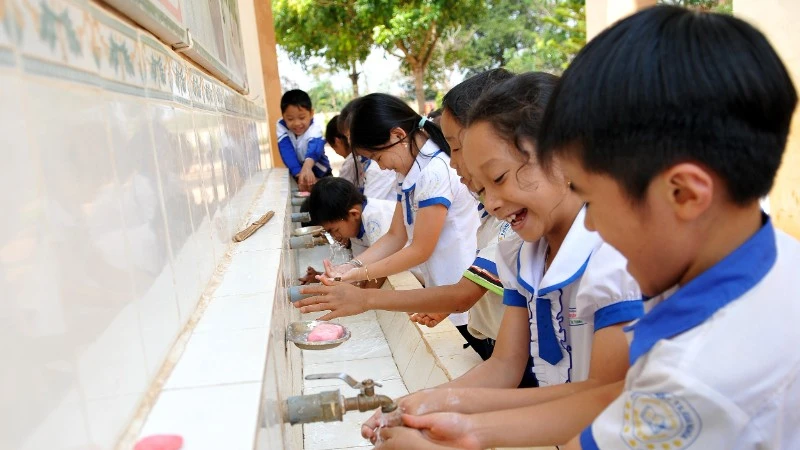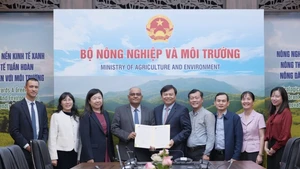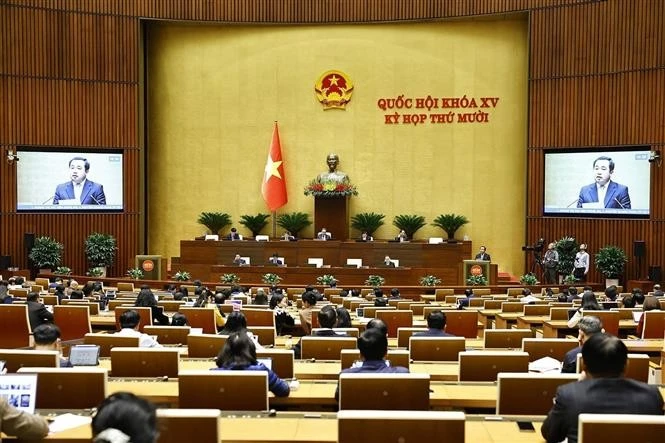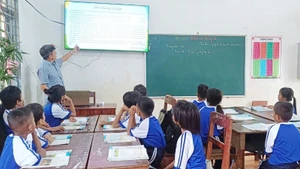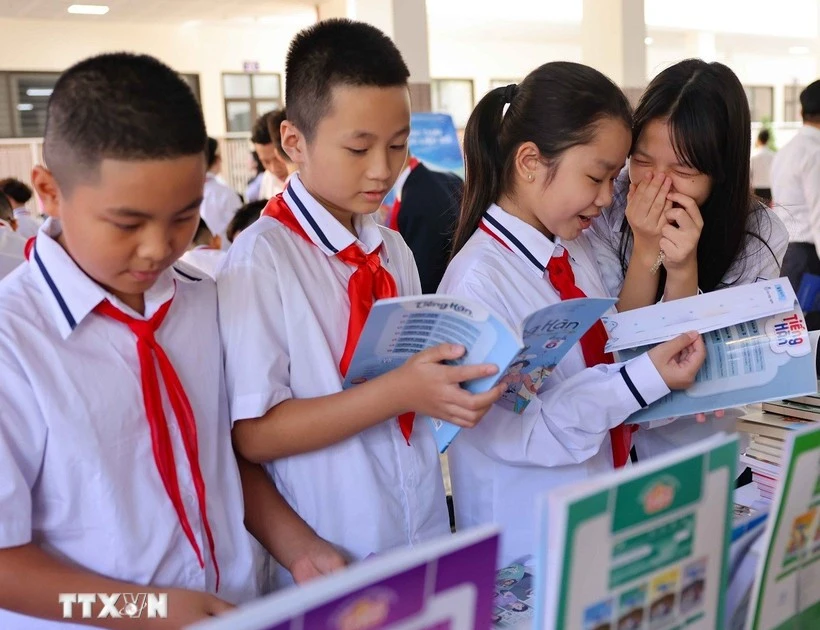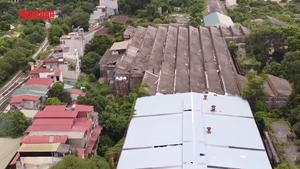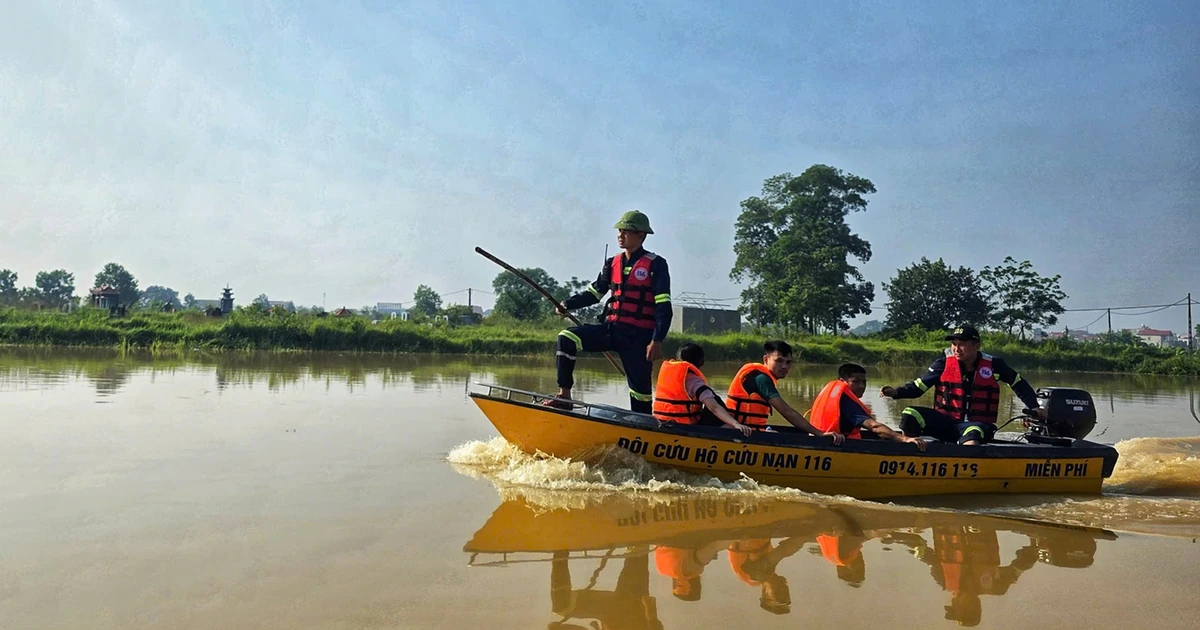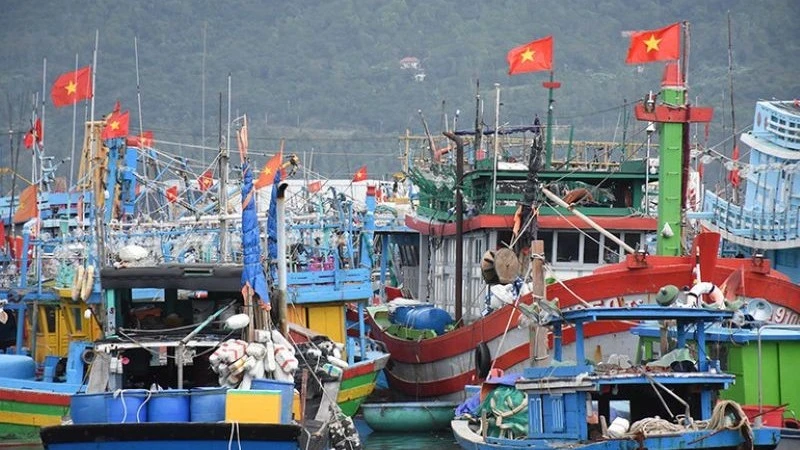In this context, the Party and the State have continuously improved the disaster response policy framework, promoting proactive preparedness while calling on the international community to share hardships and strengthen cooperation for global sustainable development.
In 2025, Viet Nam continued to endure heavy losses caused by natural disasters. According to official statistics, the country has faced around 20 types of disasters so far this year, including consecutive storms and floods that have left hundreds of people dead or missing. The total estimated economic damage stands at around 35 trillion VND (1.3 billion USD), equivalent to a 0.2% reduction in GDP.
Floods following Storm No. 11 alone caused damage exceeding 7 trillion VND (266 million USD), with Thai Nguyen Province suffering the most—around 4 trillion VND (152 million USD). Behind these figures are countless families who have lost loved ones, homes, property, and farmland; livelihoods destroyed and production disrupted.
As a country regularly devastated by natural disasters, the Party and the State have always prioritised disaster preparedness and response at the highest level. Whenever an incident occurs, the entire political system—from the central to local levels—along with armed forces, mass organisations and communities, is mobilised to provide relief and rebuild lives.
After several amendments, on February 26, 2025, the National Assembly issued the Consolidated Document No. 21/VBHN-VPQH on the Law on Natural Disaster Prevention and Control.
Notably, Articles 4 and 16 of the Law integrate disaster prevention and control into sectoral and socio-economic development planning at both regional and local levels to ensure sustainable development. The Law also emphasises that disaster prevention and control are the shared responsibilities of the State, organisations and individuals—where the State plays the leading role, organisations and individuals act proactively, and communities support one another.
However, when the consequences of disasters exceed the capacity of local authorities and residents, the involvement of the international community becomes essential to mobilise resources for repairing and upgrading infrastructure such as roads, health facilities and schools; supporting production and livelihoods in heavily affected areas; protecting the environment; and restoring ecosystems after floods.
In the long term, the international community can assist Viet Nam through technical cooperation, modern equipment for early warning and disaster risk management, and the sharing of experience in developing adaptive infrastructure. Reflecting this need, during the “Disaster risk reduction partnership” meeting held on October 9, 2025, Viet Nam officially called for urgent assistance from over 30 international organisations and embassies.
After several amendments, on February 26, 2025, the National Assembly issued the Consolidated Document No. 21/VBHN-VPQH on the Law on Natural Disaster Prevention and Control.
Speaking at the meeting, Pauline Tamesis, the United Nations Resident Coordinator in Viet Nam, said: “At this moment, I make a sincere appeal: we must come together to provide emergency support to the most affected localities. Many families have lost their homes, livelihoods, and even loved ones. Our collective action can become a lifeline for those struggling with the aftermath of disasters.”
At the same meeting, numerous organisations pledged relief assistance. Japan, through JICA, provided essential goods directly to Bac Ninh, with the first shipment arriving on October 13, 2025.
Australia, Russia and ASEAN also offered aid, with the total initial value exceeding several million USD. Australia committed 3 million AUD (about 1.95 million USD) in humanitarian support and essential supplies for severely affected areas. ASEAN, through the AHA Centre, supplied critical relief items such as household tools, water filters, blankets and multipurpose roofing sheets.
This support not only addresses immediate humanitarian needs but also contributes to global objectives on disaster risk reduction, consistent with international frameworks such as the Sendai Framework for Disaster Risk Reduction 2015–2030, the Vienna Convention for the Protection of the Ozone Layer, and ASEAN agreements on disaster management.
For many years, Viet Nam has demonstrated solidarity and readiness to assist other countries in times of hardship. Recently, as Cuba faced economic crisis, natural disasters and prolonged sanctions, Viet Nam launched the campaign “65 Years of Viet Nam–Cuba Friendship” under the message “Viet Nam – Cuba, always side by side through challenges”, raising more than 500 billion VND (19 million USD).
Previously, following the earthquake and tsunami in Sulawesi, Indonesia, in September 2018, Viet Nam immediately provided 100,000 USD in aid and essential supplies such as food and medicine.
During the floods that struck Savannakhet Province and border areas of Laos in July–August 2025, the Consulate General of Viet Nam in Savannakhet donated one tonne of rice and other necessities to support affected residents, helping to stabilise their lives and reflecting the friendship and mutual assistance between Viet Nam and Laos. At the Nghe An–Laos border, Vietnamese citizens also shared relief items—food, drinking water and clothing—with dozens of isolated Lao households. These actions highlight the importance of international cooperation and global solidarity in disaster response.
However, with hostility and malicious intent, reactionary forces have distorted and slandered Viet Nam’s appeal for international support and the contributions of overseas Vietnamese to aid disaster victims. Among these groups, the terrorist organisation Viet Tan is particularly active.
On online platforms, this organisation frequently publishes false information, misrepresenting the State’s appeals for international assistance as an admission of weakness or incompetence, and falsely accusing the Government of failing to allocate funds for disaster recovery while “begging from the world”.
Furthermore, when overseas Vietnamese communities express solidarity and provide aid to their compatriots, these elements cynically claim that such appeals are “hypocritical”, portraying the effort as a scheme to “exploit the diaspora”. These falsehoods aim to provoke social instability, undermine the leadership of the Party and State, sow division among Vietnamese people at home and abroad, and erode public trust in the political system.
In reality, when disasters occur, local authorities respond swiftly—issuing timely warnings, evacuating residents, repairing irrigation and dike systems, improving drainage infrastructure, and ensuring on-site preparedness. Forecasting, warning and hydro-meteorological monitoring systems have been strengthened. Public communication on disaster risk reduction has been expanded, raising community awareness about preventive measures.
These falsehoods aim to provoke social instability, undermine the leadership of the Party and State, sow division among Vietnamese people at home and abroad, and erode public trust in the political system.
In 2025 alone, numerous official documents on disaster preparedness and response were issued, including the Prime Minister’s Directive No. 19/CT-TTg dated June 19, 2025, which emphasised early forecasting and intersectoral coordination. The Prime Minister also issued several directives and telegrams to ensure readiness from the very start of the storm season.
These policies not only reflect up-to-date realities but also incorporate modern technologies, such as artificial intelligence-based early warning systems, helping to minimise damage more effectively. Following Storms No. 10 and 11, the Party and State provided close, decisive direction for recovery efforts.
On October 8, 2025, the Prime Minister issued Decision No. 2221/QD-TTg, allocating 140 billion VND (5.3 million USD) from the central budget’s contingency fund to four provinces—Thai Nguyen, Cao Bang, Lang Son and Bac Ninh—for post-flood recovery. Subsequently, on October 12, 2025, Decision No. 2241/QD-TTg provided an additional 400 billion VND (15.2 million USD) to further assist disaster-hit areas.
Recovery efforts are being urgently carried out in residential areas. Rising from pain and loss, people are rebuilding their lives with determination, resilience and the support of the entire community.
Climate change will continue to intensify the severity and unpredictability of natural disasters. Alongside policy and technical solutions, it is the spirit of national and international solidarity that will form the most powerful foundation for nations to overcome these challenges—together building a more resilient and compassionate world.
